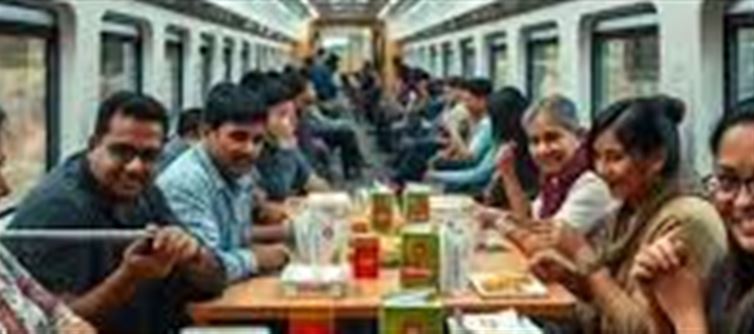
Train journeys are about to get a whole lot tastier! Passengers traveling in express trains can now order their favorite meals and get them delivered directly to their seats. No more rushing at stations or settling for whatever is available onboard. Here’s everything you need to know about this new 4-hour Food on Train facility.
1. Food Delivered Right to Your Seat
Gone are the days when passengers had to rely on pantry car food or wait for station vendors. With this facility, you can choose your favorite meal, place an order, and get it delivered hot and fresh right at your seat – just like ordering food at home!
2. Easy Ordering via App or Website
Passengers can order through the official irctc e-Catering app, website, or even by calling the helpline number. You just need to enter your PNR number, choose from the menu, pay online or opt for cash on delivery, and you’re done.
3. Multiple Food Options to Choose From
Whether you crave North indian thali, South indian delicacies, Chinese, fast food, or even desserts, there’s something for everyone. Leading food chains and FSSAI-approved vendors are partnered to ensure quality and hygiene.
4. Order Up to 4 Hours Before Delivery
The best part? You can order your meal up to 4 hours before your train reaches the station where the food will be delivered. This ensures that food is freshly prepared and reaches you on time.
5. Flexible Payment Options
Choose what’s convenient for you – pay online via UPI, debit/credit card, net banking, or select cash on delivery when the meal arrives at your seat.
6. Available at Hundreds of Stations
This service is available at major stations across india and is gradually expanding. This means no matter where you are traveling, you’ll likely find a station en route where you can get your meal delivered.
7. Hygienic, FSSAI-Approved Food
Passenger safety is a priority, so all vendors are FSSAI certified and follow strict hygiene standards. Meals are packed carefully to ensure they remain fresh during delivery.
Disclaimer:
The views and opinions expressed in this article are those of the author and do not necessarily reflect the official policy or position of any agency, organization, employer, or company. All information provided is for general informational purposes only. While every effort has been made to ensure accuracy, we make no representations or warranties of any kind, express or implied, about the completeness, reliability, or suitability of the information contained herein. Readers are advised to verify facts and seek professional advice where necessary. Any reliance placed on such information is strictly at the reader’s own risk.
.jpg)




 click and follow Indiaherald WhatsApp channel
click and follow Indiaherald WhatsApp channel